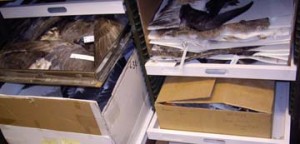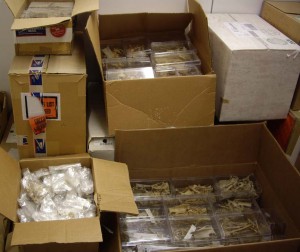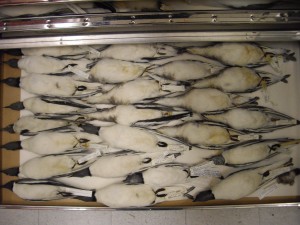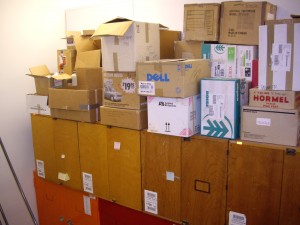We house and oversee the development and use of the State bird collection, and this collection’s growth has severely overtaxed our capacity to properly house specimens. For example, our skeleton collection, which requires less stringent conditions for preservation, is largely inaccessible, and we’ve been forced to temporarily put lesser-used portions of the skin collection in plastic-wrapped cardboard boxes salted with mothballs because our specimen cabinets are too full to hold any more. Our taxonomic sorting began to get rather blurred some time ago as we crammed skins into every available space. As a rather heavily used research collection, this lack of appropriate space is a severe problem.
To rectify this situation, we have submitted a proposal for new cabinets and, to maximize available space, a compactor system to hold them. (A compactor enables you to open an aisle only where it is needed, so no space is wasted.) We submitted this proposal this week to the National Science Foundation’s program for Collections in Support of Biological Research. We received support from this program ten years ago to fill out all of the space we then had available for cabinets before the museum expansion. Our current proposal would fill up post-expansion space with the cabinets that the collection requires. There are no internal university funds to satisfy this dire need, so we trust that the collection’s demonstrated importance to national and international science will compel reviewers and NSF to approve our grant proposal.
This is a good problem to have (though it is very important to solve). It means that our activity level is not a static, flatline endeavor, but rather a dynamic effort attuned to the needs of science in a changing world. And continuing to meet these needs is our mission.




